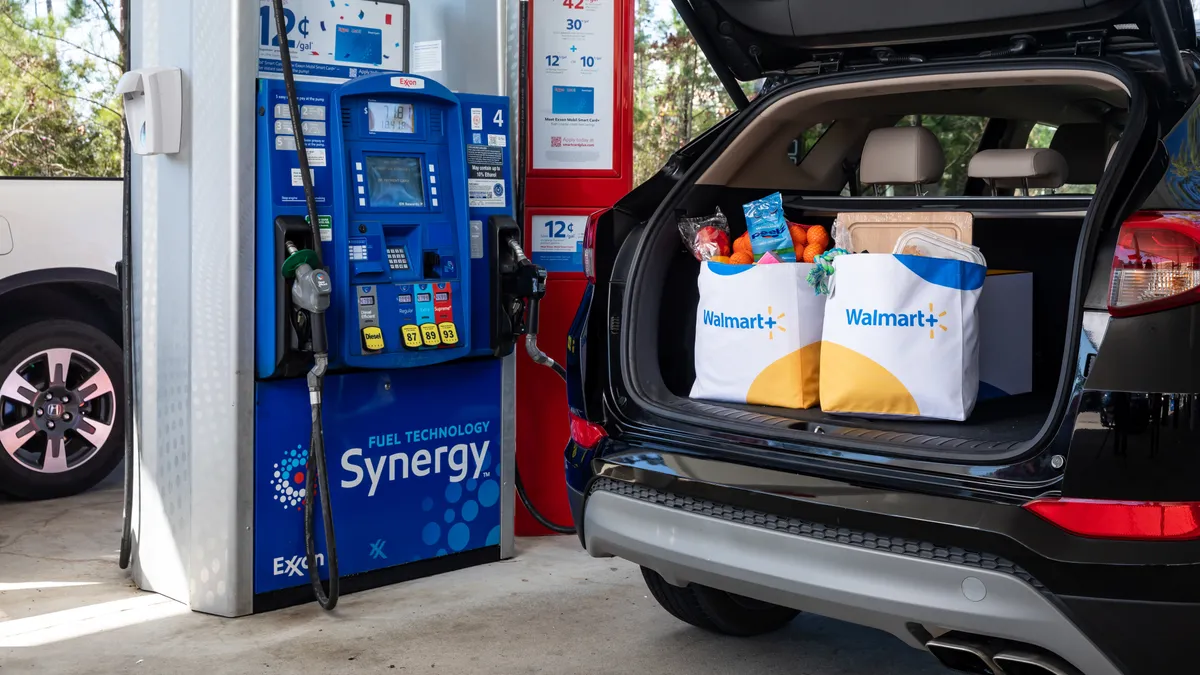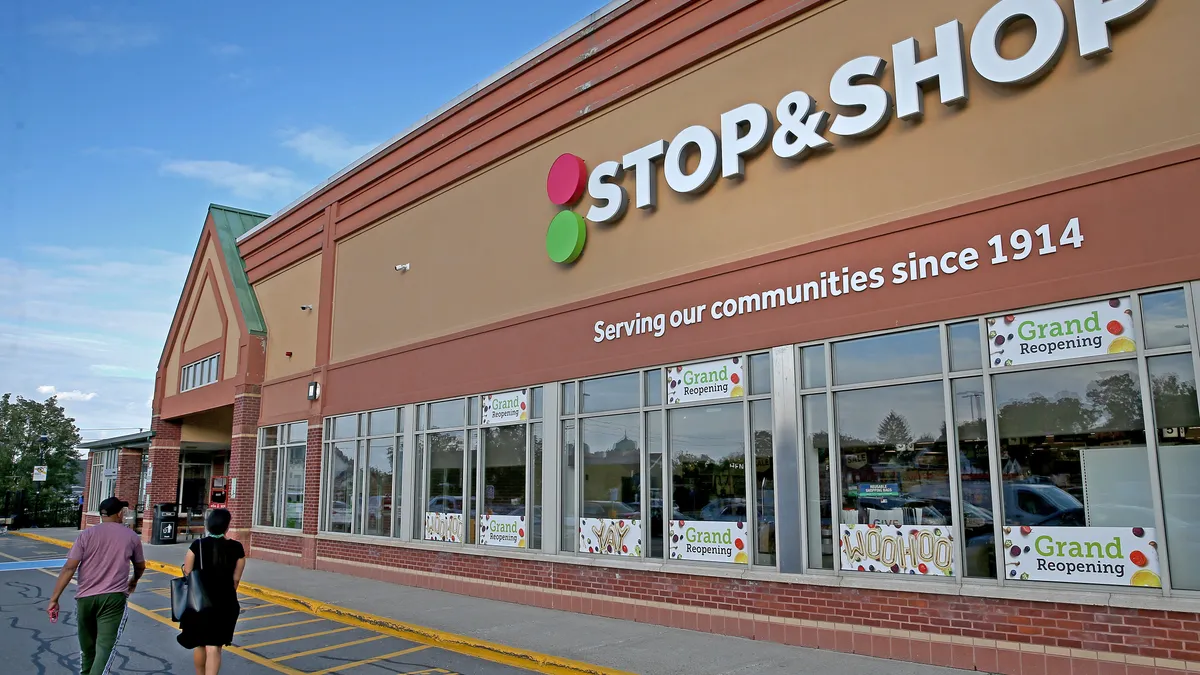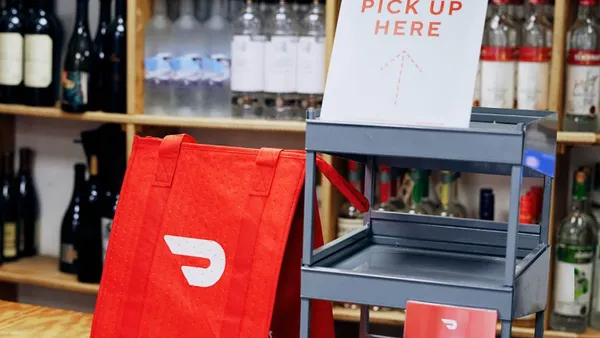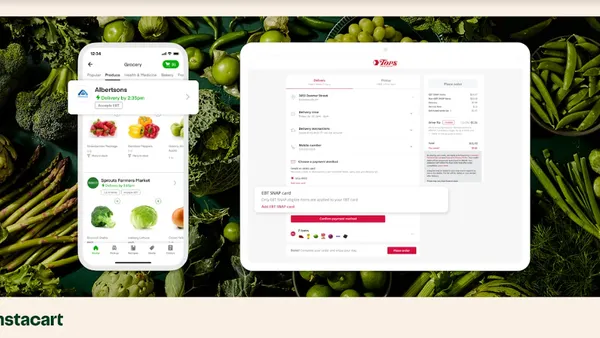Dive Brief:
- Online grocery sales reached $8.1 billion in November, up 5.2% compared to the same time last year, led by gains in all three e-commerce channels, according to a new report from Brick Meets Click and sponsored by Mercatus.
- At 8.6% growth, delivery reported the largest year-over-year sales increase due to a “significant jump” in its monthly users, which helped grow order volume by 7.5%, the report found.
- The report highlights the dominance mass retailers, like Walmart, are gaining in not just grocery e-commerce, but grocery shopping overall. In November, 42% of U.S. households used a mass retailer for most of their in-store or online grocery shopping — a flip from May when the same percentage said they used supermarkets as their main store.
Dive Insight:
In November, mass retailers overtook supermarkets as the primary retail format for most households’ grocery purchases, whether in-store or online, the report found.
“The current economic realities and omnichannel strategies are aiding Mass retailers in attracting more customers today,” David Bishop, partner at Brick Meets Click, said in a statement. “The price advantage that a Mass rival, such as Walmart, enjoys is motivating cash-strapped households to shift where they shop, and Mass customer engagement strategies are making it easier for those customers to shop the way they want.”
Brick Meets Click and Mercatus’ report indicates that Walmart’s omnichannel efforts to meet consumers’ in-store and e-commerce needs are resonating with shoppers. During November, households who shopped for groceries primarily at Walmart were also more likely to shop online for groceries — and to do so at Walmart — compared to households who shopped mainly at supermarkets.
Both mass retailers and supermarkets posted the same lower order frequency among their monthly active users, but the report’s findings showed there’s an e-commerce grocery gap that’s benefiting retailers like Walmart and Target.
During the month, mass retailers saw stronger growth in their monthly active user base and average order values across delivery and pickup, compared to supermarkets, per the report.
The percentage of households who bought groceries online from both grocers, which includes supermarkets and hard discounters, and mass retailers rose 3% during the month compared to the same time last year, leading to a third of grocery’s monthly active users cross-shopping.
Meanwhile, the rate of pickup and delivery users who intend to order again improved 6.3% for mass retailers but declined 6.9% for grocers.
Given the stiff competition from mass merchants, it’s important for grocers to pay closer attention to current customers' expectations for online services and then provide the kind of experience they want, Sylvain Perrier, president and CEO of Mercatus, said in a statement.
Regional grocers, especially, are facing challenges in acquiring and retaining customers, Perrier said. His comments echo findings the two firms released earlier this month that regional grocers’ e-commerce sales slipped in the third quarter due to a higher rate of lapsed shoppers who have either gone back to in-store buying or switched to a competitor’s online services.
Total grocery e-commerce growth has been choppy over the last year
Overall grocery e-commerce sales have rebounded with the holidays underway after yo-yo-ing this summer.
In November, pickup sales grew 1.6% to $3.6 billion thanks to higher average order values. Pickup’s penetration among all age groups declined in November, with Brick Meets Click and Mercatus noting the reason was unclear.
Delivery recorded $3.2 billion in sales in November. Contributing to that growth was Walmart expanding its first-party delivery service, along with grocers and third-party providers ramping up membership and subscription offers, the report said.
In November, ship-to-home sales climbed 7.6% to $1.3 billion driven by monthly active user growth in Amazon’s pure-play services. Ship-to-home includes orders that are handled by carriers like FedEx, UPS and USPS.
The report is based on a survey of 1,814 adults from Nov. 29-30.














